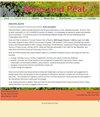An incubation study of GHG flux responses to a changing water table linked to biochemical parameters across a peatland restoration chronosequence.
IF 1.5
4区 环境科学与生态学
Q4 ENVIRONMENTAL SCIENCES
引用次数: 7
Abstract
Large areas of northern peatlands have been drained and afforested with conifers in the 20 century. This has led to changes in the hydrology of the peatlands, the quality and quantity of organic matter inputs and soil microbial communities, which are all likely to impact on greenhouse gas (GHG) fluxes. Considerable areas of these forest plantations are undergoing restoration, and our aim was to assess whether contrasting compositions of peat, in conjunction with hydrological changes in a controlled lab experiment, impact on GHG fluxes. We incubated vegetation free cores (at 8 °C) from a near-natural bog, restoration sites felled in 1998, 2006, 2012 and a current forest plantation at (a) low water tables, (b) high tables or (c) water tables that were changed from low to high. Results show that peat quality and nutrient availability in the pore water have been altered by the forest plantations, which resulted in dissimilar carbon dioxide (CO2) fluxes between the sites under the same temperature and water table conditions. Higher CO2 fluxes were found in the peat cores from the forest plantations than from sites that have undergone restoration and from the near-natural bog. However, there were few differences in methane (CH4) fluxes from the different sites, indicating that on its own (i.e., in the absence of biotic interactions under field conditions) the effects of forestry on CH4 flux are limited.泥炭地恢复时序中与生物化学参数相关的地下水位变化的温室气体通量响应的孵化研究。
20世纪,北部的大片泥炭地已被排干,并种植了针叶树。这导致泥炭地的水文、有机质输入的质量和数量以及土壤微生物群落发生变化,这些都可能影响温室气体通量。这些森林人工林的相当大区域正在进行恢复,我们的目的是评估泥炭的不同组成以及受控实验室实验中的水文变化是否对温室气体通量产生影响。我们将一个接近自然的沼泽、1998年、2006年、2012年被砍伐的恢复地点和一个目前的人工林在(a)低地下水位、(b)高地下水位或(C)从低到高的地下水位中培养无植被的核心(8°C)。结果表明:在相同的温度和地下水位条件下,人工林改变了泥炭质和孔隙水养分有效性,导致不同样地间CO2通量的差异。在森林人工林的泥炭岩心中发现的二氧化碳通量高于经过恢复的地点和接近自然的沼泽。然而,不同地点的甲烷(CH4)通量差异不大,表明林业本身(即在野外条件下没有生物相互作用的情况下)对CH4通量的影响是有限的。
本文章由计算机程序翻译,如有差异,请以英文原文为准。
求助全文
约1分钟内获得全文
求助全文
来源期刊

Mires and Peat
ENVIRONMENTAL SCIENCES-
CiteScore
2.30
自引率
16.70%
发文量
0
审稿时长
33 weeks
期刊介绍:
Mires and Peat is a peer-reviewed internet journal focusing specifically on mires, peatlands and peat. As a truly “free-to-users” publication (i.e. NO CHARGES to authors OR readers), it is immediately accessible to readers and potential authors worldwide. It is published jointly by the International Peatland Society (IPS) and the International Mire Conservation Group (IMCG).
Mires and Peat is indexed by Thomson Reuters Web of Science (2017 Impact Factors: 1.326 [two-year] and 1.638 [five-year]), Elsevier Scopus, EBSCO Environment Complete, CABI Abstracts, CSA Proquest (including their Aquatic Science and Fisheries Abstracts ASFA, Ecology, Entomology, Animal Behavior, Aqualine and Pollution databases) and Directory of Open Access Journals (DOAJ). Mires and Peat also participates in the CABI Full Text Repository, and subscribes to the Portico E-journal Preservation Service (LTPA).
Mires and Peat publishes high-quality research papers on all aspects of peatland science, technology and wise use, including:
ecology, hydrology, survey, inventory, classification, functions and values of mires and peatlands;
scientific, economic and human aspects of the management of peatlands for agriculture, forestry, nature conservation, environmental protection, peat extraction, industrial development and other purposes;
biological, physical and chemical characteristics of peat; and
climate change and peatlands.
Short communications and review articles on these and related topics will also be considered; and suggestions for special issues of the Journal based on the proceedings of conferences, seminars, symposia and workshops will be welcomed. The submission of material by authors and from countries whose work would otherwise be inaccessible to the international community is particularly encouraged.
 求助内容:
求助内容: 应助结果提醒方式:
应助结果提醒方式:


